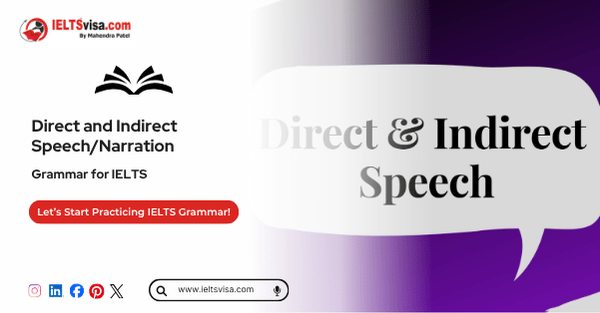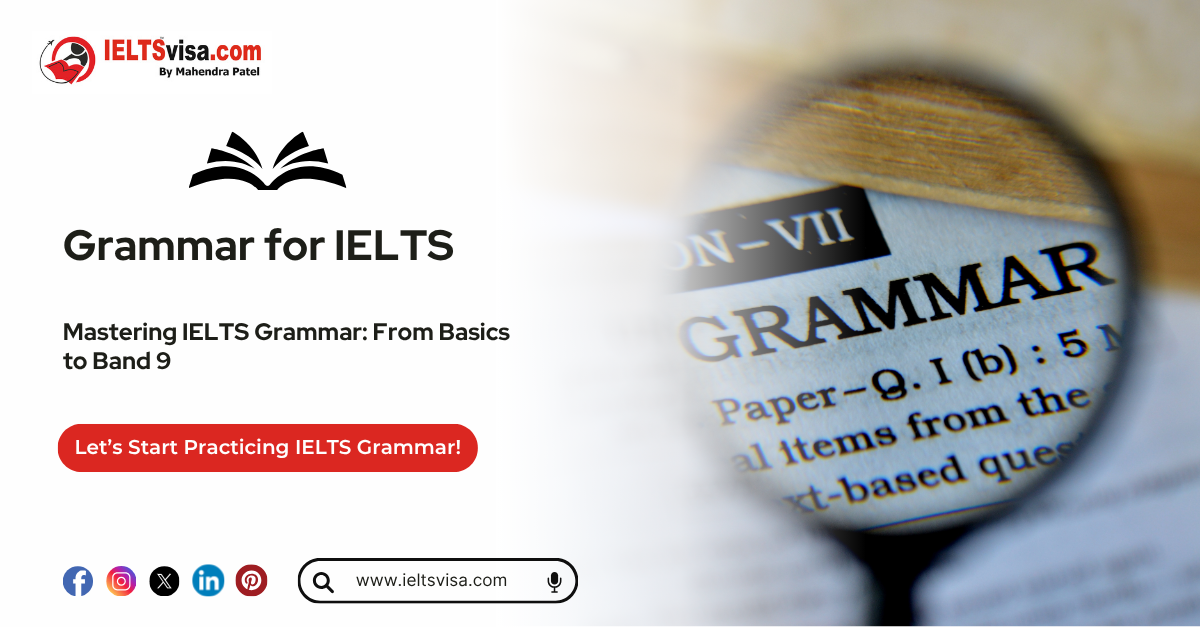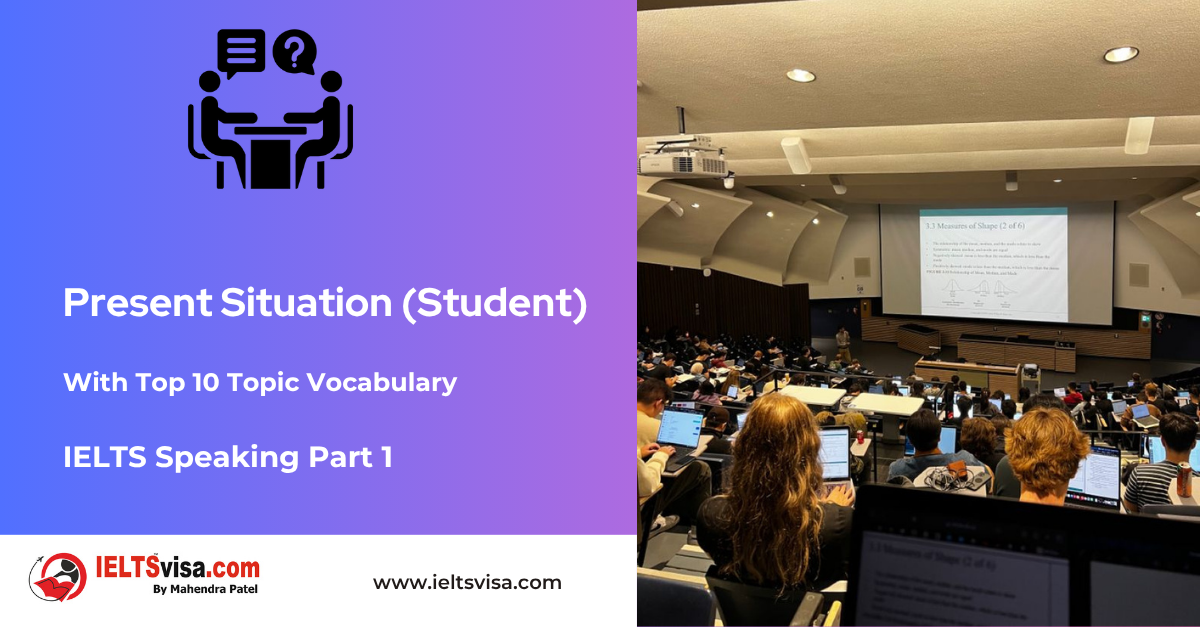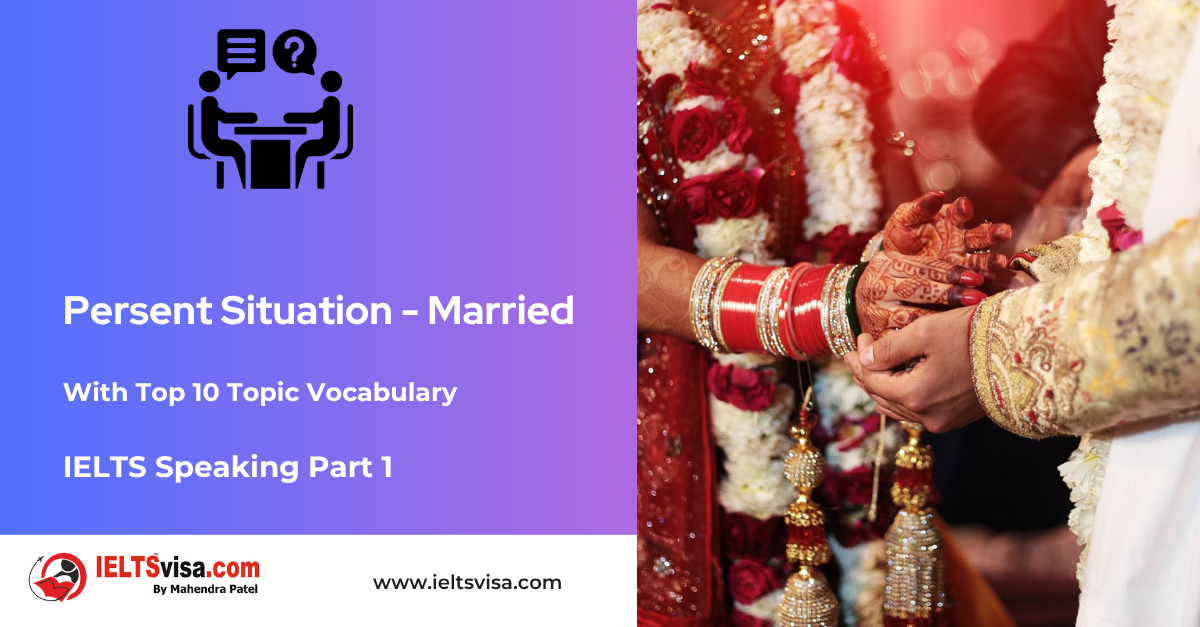Direct and Indirect Speech / Narration
Grammar for IELTS

Direct and Indirect Speech/Narration
Mastering direct and indirect speech is an essential part of learning English. These rules help us report spoken words accurately and effectively in various contexts, whether in conversation, writing, or exams. This guide will walk you through the meaning, rules, and examples of direct and indirect speech in a clear and easy-to-understand manner for beginners and young learners.
Table of Contents
-
- What Is Direct and Indirect Speech?
- Key Differences Between Direct and Indirect Speech
- Rules for Changing Direct Speech to Indirect Speech
-
- Changing Tenses
- Changing Pronouns
- Handling Time and Place Words
- Reporting Verbs
-
- Rules for Interrogative Sentences
- Rules for Imperatives, Requests, and Exclamations
- Examples of Direct and Indirect Speech for All Tenses
- Common Errors to Avoid
- Practice Exercises
- Frequently Asked Questions
What Is Direct and Indirect Speech?
Direct Speech: When you report someone’s exact words, it is called direct speech. Quotation marks are used to enclose the spoken words.
-
- Example: John said, “I am happy.”
Indirect Speech: When you report the essence of someone’s speech but not their exact words, it is called indirect speech. The sentence is transformed to match the context of the speaker.
-
- Example: John said that he was happy.
Key Differences Between Direct and Indirect Speech
|
Aspect |
Direct Speech |
Indirect Speech |
|
Quotations |
Requires quotation marks |
No quotation marks |
|
Exact Words |
Speaker’s exact words are used |
Words are paraphrased |
|
Tense |
Tense remains the same |
Tense often changes |
|
Pronouns |
No change in pronouns |
Pronouns change to match context |
|
Time/Place Words |
Original time/place words are retained |
Time/place words are adjusted |
Rules for Changing Direct Speech to Indirect Speech
1. Changing Tenses
When the reporting verb is in the past tense, the tense of the direct speech usually changes. Here’s a simple guide:
|
Direct Speech Tense |
Indirect Speech Tense |
Example |
|
Simple Present |
Simple Past |
Direct: “I eat apples.” Indirect: He said he ate apples. |
|
Present Continuous |
Past Continuous |
Direct: “I am eating apples.” Indirect: He said he was eating apples. |
|
Present Perfect |
Past Perfect |
Direct: “I have eaten apples.” Indirect: He said he had eaten apples. |
|
Simple Past |
Past Perfect |
Direct: “I ate apples.” Indirect: He said he had eaten apples. |
|
Past Continuous |
Past Perfect Continuous |
Direct: “I was eating apples.” Indirect: He said he had been eating apples. |
|
Future |
Conditional |
Direct: “I will eat apples.” Indirect: He said he would eat apples. |
2. Changing Pronouns
Pronouns in indirect speech must match the context of the reporting speaker.
|
Direct Pronoun |
Indirect Pronoun |
Example |
|
I |
He/She |
Direct: “I am happy.” Indirect: He said he was happy. |
|
We |
They |
Direct: “We are leaving.” Indirect: They said they were leaving. |
|
You |
I/We/They |
Direct: “You are late.” Indirect: She said I was late. |
3. Handling Time and Place Words
Certain words in direct speech change to reflect the shift in time or place in indirect speech.
|
Direct Speech |
Indirect Speech |
Example |
|
Now |
Then |
Direct: “I am busy now.” Indirect: She said she was busy then. |
|
Today |
That day |
Direct: “I will go today.” Indirect: He said he would go that day. |
|
Tomorrow |
The next day |
Direct: “I will leave tomorrow.” Indirect: He said he would leave the next day. |
|
Yesterday |
The previous day |
Direct: “I came yesterday.” Indirect: She said she had come the previous day. |
4. Reporting Verbs
The reporting verb (e.g., said, asked, told) often changes depending on the sentence’s context.
-
- Statements: Use “said” or “told” (e.g., She said that she was tired.)
- Questions: Use “asked” or “inquired” (e.g., He asked where I was going.)
- Commands/Requests: Use “ordered,” “requested,” or “urged” (e.g., She requested me to open the door.)
When converting questions from direct to indirect speech:Rules for Interrogative Sentences
1. Remove the question marks.
2. Use reporting verbs like “asked” or “inquired.”
3. Adjust word order to match a statement structure.
| Type | Example |
| WH-Questions | Direct: “Where are you going?” Indirect: He asked where I was going. |
| Yes/No Questions | Direct: “Are you coming?” Indirect: She asked if I was coming. |
Rules for Imperatives, Requests, and Exclamations
1. Imperatives:
-
- Use “ordered” or “commanded.”
- Convert the verb to the infinitive.
- Example: Direct: “Close the door.” Indirect: He ordered me to close the door.
2. Requests:
-
- Use “requested” or “pleaded.”
- Convert the verb to the infinitive.
- Example: Direct: “Please help me.” Indirect: She requested me to help her.
3. Exclamations:
-
- Use “exclaimed” or “cried.”
- Remove interjections like “Oh” or “Wow.”
- Example: Direct: “Oh no, I’m late!” Indirect: She exclaimed that she was late.
Examples of Direct and Indirect Speech for All Tenses
|
Direct Speech |
Indirect Speech |
|
“I love ice cream,” she said. |
She said that she loved ice cream. |
|
“Are you coming?” he asked. |
He asked if I was coming. |
|
“We will meet tomorrow,” they said. |
They said that they would meet the next day. |
|
“Close the window,” she ordered. |
She ordered me to close the window. |
Common Errors to Avoid
1. Forgetting to change the tense when required.
2. Retaining quotation marks in indirect speech.
3. Using incorrect pronouns.
Practice Exercises
Convert the following direct speech into indirect speech:
1. She said, “I am reading a book.”
2. He asked, “Did you finish your homework?”
3. The teacher said, “Be quiet!”
Frequently Asked Questions
Q1: What is direct speech?
Direct speech reports the exact words spoken by a person, enclosed in quotation marks.
Q2: What is indirect speech?
Indirect speech conveys the essence of what someone said without quoting their exact words.
Q3: Why is indirect speech important?
It helps report conversations more naturally, especially in writing or storytelling.

Our Books
Master IELTS Speaking Part 1
IELTS Writing Task 1 Book
IELTS Writing Task 2 Book
Practice IELTS Other Modules
IELTS Listening
The IELTS Listening test assesses how well you can understand spoken English in various contexts. It lasts about 30 minutes and is divided into four sections with a total of 40 questions. The listening tasks become increasingly difficult as the test progresses.
IELTS Academic Reading
The IELTS Academic Reading section assesses your ability to understand and interpret a variety of texts in academic settings. It is designed to evaluate a range of reading skills, including skimming for gist, reading for main ideas, reading for detail, understanding inferences, and recognizing a writer's opinions and arguments.
IELTS Speaking
The IELTS Speaking test assesses your ability to communicate in English on everyday topics. It lasts 11-14 minutes and consists of three parts: introduction, cue card, and a discussion based on the cue card topic.
IELTS General Reading
IELTS General Reading tests your ability to understand and interpret various types of texts. Here are some key areas and types of content you can expect to encounter in the reading section, along with tips for effective preparation.
IELTS Academic Writing Task 1
In IELTS Academic Writing Task 1, you are presented with a visual representation of information, such as graphs, charts, tables, or diagrams, and you are required to summarize, compare, or explain the data in your own words.
IELTS General Writing Task 1
In IELTS General Writing Task 1, you are required to write a letter based on a given situation. The letter can be formal, semi-formal, or informal, depending on the prompt. Here’s a breakdown of the key components to include in your letter
IELTS Academic Writing Task 2
In IELTS Academic Writing Task 2, you are required to write an essay in response to a question or topic. Here’s a guide to help you understand the essential elements of this task
IELTS Exam Tips
To succeed in the IELTS exam, practice regularly, familiarize yourself with the test format, improve your vocabulary, develop time management skills, and take mock tests to build confidence.
Grammer for IELTS
Grammar is the foundation of effective communication in English. Understanding tense usage, subject-verb agreement, and sentence structure enhances clarity and coherence in writing and speaking.
Vocabulary for IELTS
Vocabulary plays a crucial role in the IELTS (International English Language Testing System) exam, especially in the Speaking and Writing sections. Here’s an overview of why vocabulary is important and how it impacts your performance
RECENT IELTS SAMPLES QUESTIONS AND ANSWERS
IELTS Speaking Part 1 – Favourite Sujbect – Physics
IELTS Speaking Part 1 - Favourite Sujbect - Physics Q: What is your favourite subject? A: My favourite subject...
IELTS Speaking Part 1 – Present Situation (Student)
IELTS Speaking Part 1 - Present Situation (Student) Q1: Are you a student or do you work?A: I’m a full-time...
IELTS Speaking Part 1 – Present Situation – Employee – as an International Student and Social Worker
IELTS Speaking Part 1 - Present Situation - Employee - as an International Student and Social Worker Q1: Are...
IELTS Speaking Part 1 – Persent Situation – Employee- as an Electric Engineer
IELTS Speaking Part 1 - Persent Situation - Employee- as an Electric Engineer Q1: What do you do for a...
IELTS Speaking Part 1 – Persent Situation – Employee – as an Software Engineer
IELTS Speaking Part 1 - Persent Situation - Employee - as an Software Engineer Q1: What do you do for a...
IELTS Speaking Part 1 – Persent Situation – Married
IELTS Speaking Part 1 - Persent Situation - Married Q1: Are you married?A: Yes, I am married. My spouse and I...













